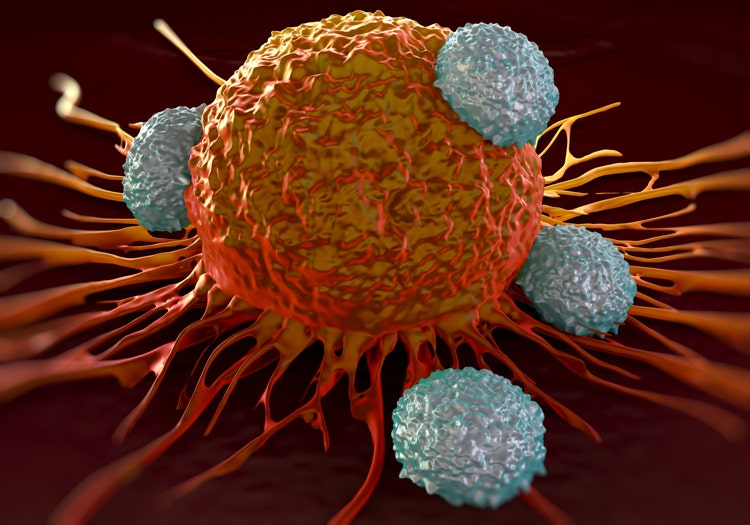
MIT Targets Tumors with TriLink Custom and Catalog mRNA
June 2017
In the last several years, cancer therapies have evolved to include vaccines as an integral part of treatment. This strategy hinges on the body’s own immune system to identify and attack cancer cells while leaving healthy cells intact (Image 1).
Though several types of vaccines exist, recently scientists have been studying the efficacy of antigen specific mRNA. Although cellular targeting and intracellular delivery of the mRNA has been challenging, mRNA vaccines offer superior safety profiles to other technologies.

Published recently in Nanoletters, Matthias Oberli and colleagues tackled this issue by developing a lipid nanoparticle (LNP) formulation to deliver mRNA to immune cells to induce a cytotoxic CD8 T cell response,
"Clinical experience with mRNA vaccines, so far, is very positive: No severe side effects have been reported, and an antigen specific immune response could be detected in some patients. We are only aware of one clinical study involving lipid nanoparticles as an mRNA vector that reported results and of one ongoing study," the researchers explained.
The group’s lipid nanoparticle library consisted of various formulations all containing a phospholipid, an ionizable lipid, a polyethylene glycol (PEG) containing lipid, cholesterol, and an additive for the delivery of mRNA vaccines.
In their initial experiments, the group tested a number of lipid nanoparticles complexed with the TriLink OVA mRNA, which were injected into mice and tested for OVA-specific CD8 T cells.
After identifying the candidate with the most potential (B-11), they showed that B-11 demonstrated favorable biodistribution using the TriLink FLuc mRNA. Likewise, with the help of the TriLink Cre recombinase mRNA, they demonstrated uptake of the mRNA-LPN complexes in multiple immune cell populations, including dendritic cells, macrophages, neutrophils, and B cells.
The researchers then tested mRNA modified with pseudouridine and 5-methylcytidine versus unmodified mRNA, and found that while OVA-specific CD4 cells remained comparable, mice treated with unmodified mRNA exhibited significantly increased CD 8 T cell levels at all time points.
Strikingly, the group then showed that the OVA mRNA–LNP complexes were functional in a tumor immunotherapy model, by showing that injection of the formulation not only slowed tumor growth but contributed to tumor shrinkage.
Finally, Oberli and colleagues showed that this effect was not specific to only the OVA antigen by utilizing a B16F10 melanoma model with the self-antigens of tyrosinase-related protein 2 (TRP2) and glycoprotein 100 (gp100). Specifically, they found a significant increase in overall survival of B16510 mice treated with TRP2 and gp100 mRNA. Additionally, they found that tumor suppression was significantly enhanced by adding lipopolysaccharide (LPS) to the nanoparticle formulation.
"LPS is a very potent TLR4 agonist," the researchers noted. "We envisioned that the LPS anchors in the outer membrane of the LNPs via the lipid A anchor and points the highly hydrophobic O-antigen repeat outward. An additional benefit of replacing some of the shielding PEG with O-antigen repeat carbohydrates may be that the LNPs bind to APCs via carbohydrate recognizing lectin receptors that are omnipresent on APCs and are endocytosed more effciently."
Overall, the results suggest that the mRNA-LNP formulation induces antigen-specific immune cell activation and that LPS may positively impact its potency. Further studies are necessary to investigate the efficacy of the system with other antigens and tumor types and eventually to test whether it is effective and safe in humans.
Featured Products: OVA mRNA, FLuc mRNA, Cre mRNA, Β-gal mRNA, custom gp100 mRNA, and custom TRP2 mRNA.
Have a question? Visit Ask An Expert.

